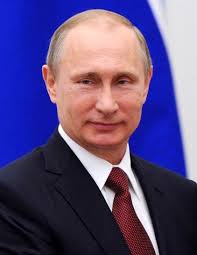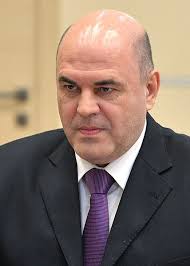2.2 Comparing Parliamentary, Presidential, and Semi-Presidential Systems
4 min read•june 18, 2024
Isabela Padilha
Kelly Cotton
AP Comparative Government 🗳️
90 resourcesSee Units
In topic 2.1, we focused on the structures 🏗️ of parliamentary, presidential, and semi-presidential systems and we explored how these systems are implemented in several of our Comp Gov countries (Parliamentary in the UK, presidential in Mexico, and semi-presidential in Russia).
Let's now turn our focus 💡 to comparing each of these systems in regards to their function and structure, as well as how each system allocates power.
Let's look at a quick chart together 👀 so we can better compare the structures and functions of each of the systems we studied in topic 2.1
Comparison of Parliamentary, Presidential, and Semi-Presidential Systems
| Pt. of Comparison | Parliamentary System | Presidential System | Semi-Presidential System |
| Branches | No separation of powers | Separation of powers | Separation of powers |
| Power | Lies with the legislature | Specific powers within each branch | Specific powers within each branch |
| Elections | Legislature elected by the people directly | Executive and legislative branches voted on by the people directly | Executive branch voted on by the people directly/President appoints prime Minister and cabinet |
| Roles | Prime Minister | President/Legislature | President/Prime Minister coexist |
| Function | Typically less gridlock | Gridlock is common problem | Little gridlock as Prime Minister is typically an administrative role |
In a parliamentary system, like in the UK 🇬🇧, there is no separation of powers. The legislature and executive branch are one 1️⃣. This is the complete opposite of a presidential system like Mexico, where the branches are separated.
In the UK, power is fused 🤲 between the executive and legislative branches, so there are far fewer obstacles to get legislation passed ✅ as the legislature is serving the prime minister (and remember, the legislature chooses the prime minister).
A good example of this would be devolution in the UK. This happened very quickly in the late 1990s because the prime minister in control at the time ⏲️ came from the majority party in Parliament. Forgot 🤔 about devolution from Unit 1? Check out:
📝 Read: AP Comp Gov—Unit 1 Study Guide <<Link TK>>
To contrast the UK, in a presidential system like Nigeria 🇳🇬, the branches and powers are separated, and that creates a greater series of checks and balances ⚖️ An example of a check on power would be when the president had his budget 🤑 rejected by the senate in 2016 because it relied too heavily on foreign loans. 💸
The AP Exam does NOT mention a comparison of parliamentary systems or presidential systems with semi-presidential systems. Let's spend a moment to talk about why 🤔
The only course country that uses this system is Russia. Russia 🇷🇺 is a difficult point of comparison for the following two 2️⃣ reasons:
- Vladimir Putin. In Russia's semi-presidential system, the president and the prime minister co-exist and complement each other. However, Putin is in clear control 💪 as President. The only Prime Minister of note in the modern era is Mishustin in 2008, so this makes it difficult to compare as an authoritarian 👑 regime.

President Putin commons.wikimieda.org

Prime Minister Mishustin commons.wikimedia.org
2. Authoritarian 👑 Regime. The course countries that represent parliamentary and presidential systems are democratic 🙋regimes (UK, Mexico, and Nigeria). The semi-presidential example, Russia, is an authoritarian 👑 regime. This makes it difficult to compare the systems because the regimes are not comparable in regards to who makes decisions.
In authoritarian regimes, political elites, like Vladimir Putin, make decisions without much input from citizens. This is very different from the UK, Mexico, and Nigeria, where citizens have greater decision-making ability through elections. In Mexico and Nigeria, different parties can win elections, and have. In Russia 🇷🇺, the United Russia Party has not lost an election in the modern era.
Although the parliamentary system tends to be more efficient ✅ with policy making, there is no separation of power between the executive 👩⚖️ and legislative branches. However, some checks and balances ⚖️ STILL exist despite the fused powers. Let's go through a few examples from the UK, our prime example of the parliamentary system.
Examples of Checks and Balances in a Parliamentary System
- 🗳️Elections. In 2011 the Commons passed a law 📜 allowing for a fixed-term election system. The UK now has fixed-term elections every five 5️⃣ years for the House of Commons. This is a way of checking the Prime Minister's power. Remember that the prime minister is selected by the majority party in Parliament. This is a perfect example of what many governments call "imposing time deadlines on calling new elections."
- 💡 You may still be asking yourself, how does the Parliament choose the Prime Minister after people vote? Here is a quick rundown to how the Prime Minister is selected in one of our core countries, the UK 🇬🇧: If a PM loses the trusty of the parliament, or decides to resign, the monarch invites a member of the ruling party (or the opposition!) to command. If the PM cannot be selected this way, the parliament may call for a General Election.
- ❓Questions of the Executive. In the UK, the House of Commons regularly holds Questions with the prime minister. If you want a good time, you should watch some examples of this! It's very different from US politics and highly entertaining. This regular event allows the opposition and majority party to ask questions of the prime minister and the cabinet. Click here to watch past Prime Minister's Questions.
- Another way that the parliamente can check on the Executive branch is by censuring new cabinet members.
Now you understand how power 👑 is allocated differently in a parliament system than in a presidential one. In the next study guide, you will learn more about the structure of the executive branch.
Browse Study Guides By Unit
👑Unit 1 – Political Systems, Regimes, & Governments
⚖️Unit 2 – Political Institutions
🙋♀️Unit 3 – Political Culture & Participation
🐘Unit 4 – Party, Electoral Systems, & Citizen Organizations
🏗Unit 5 – Political & Economic Changes & Development
🤔Exam Skills
📚Study Tools

Fiveable
Resources
© 2025 Fiveable Inc. All rights reserved.